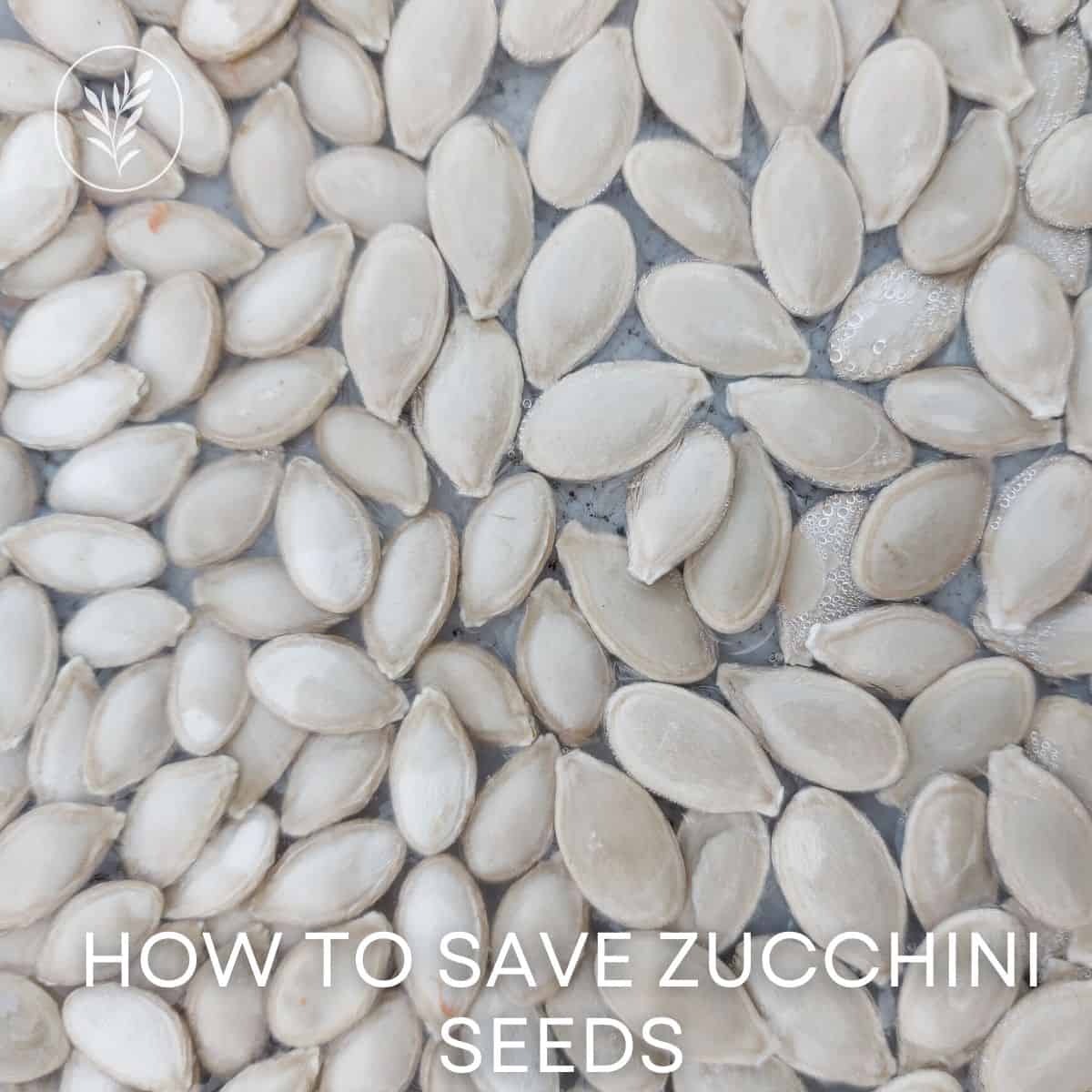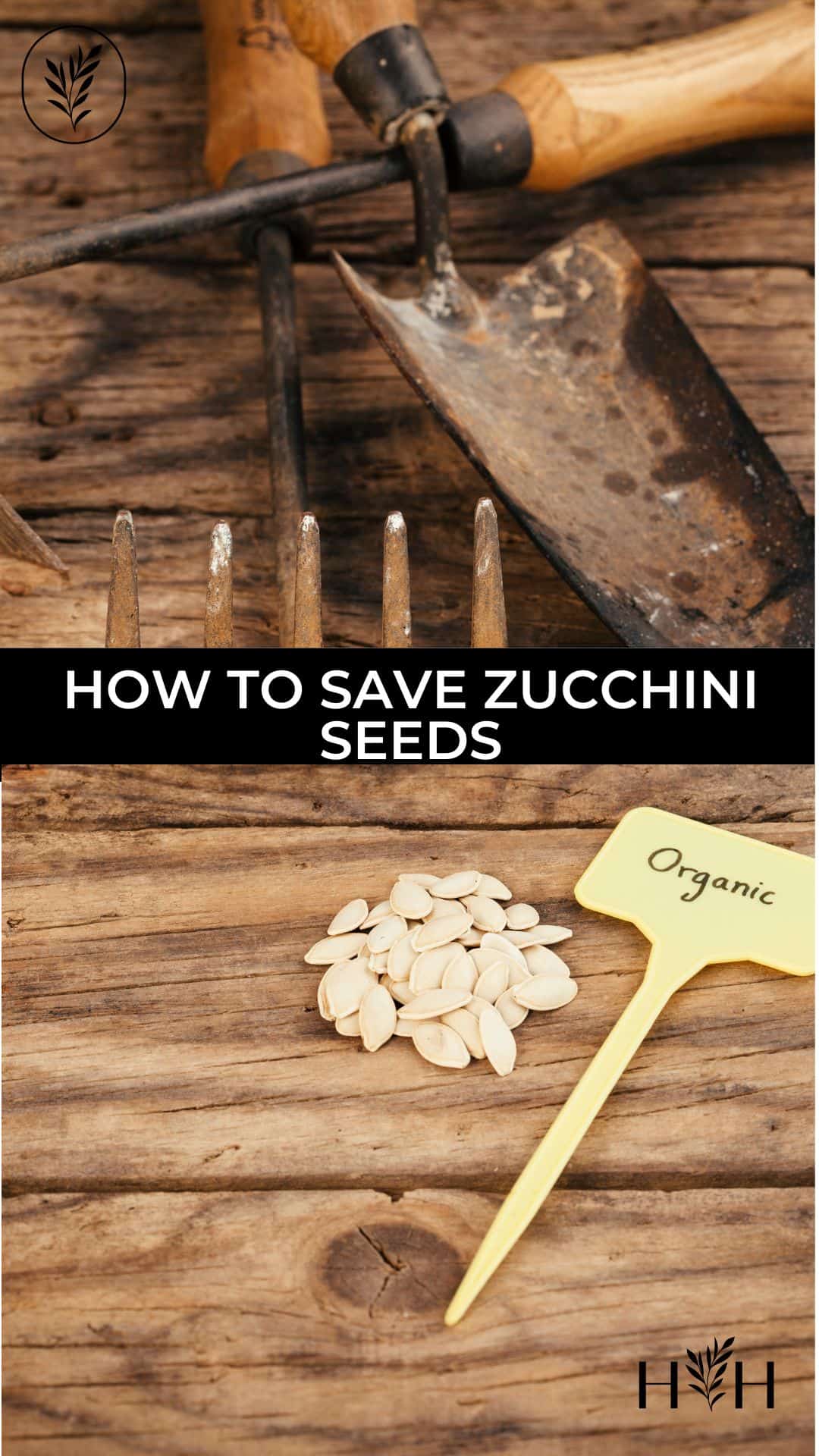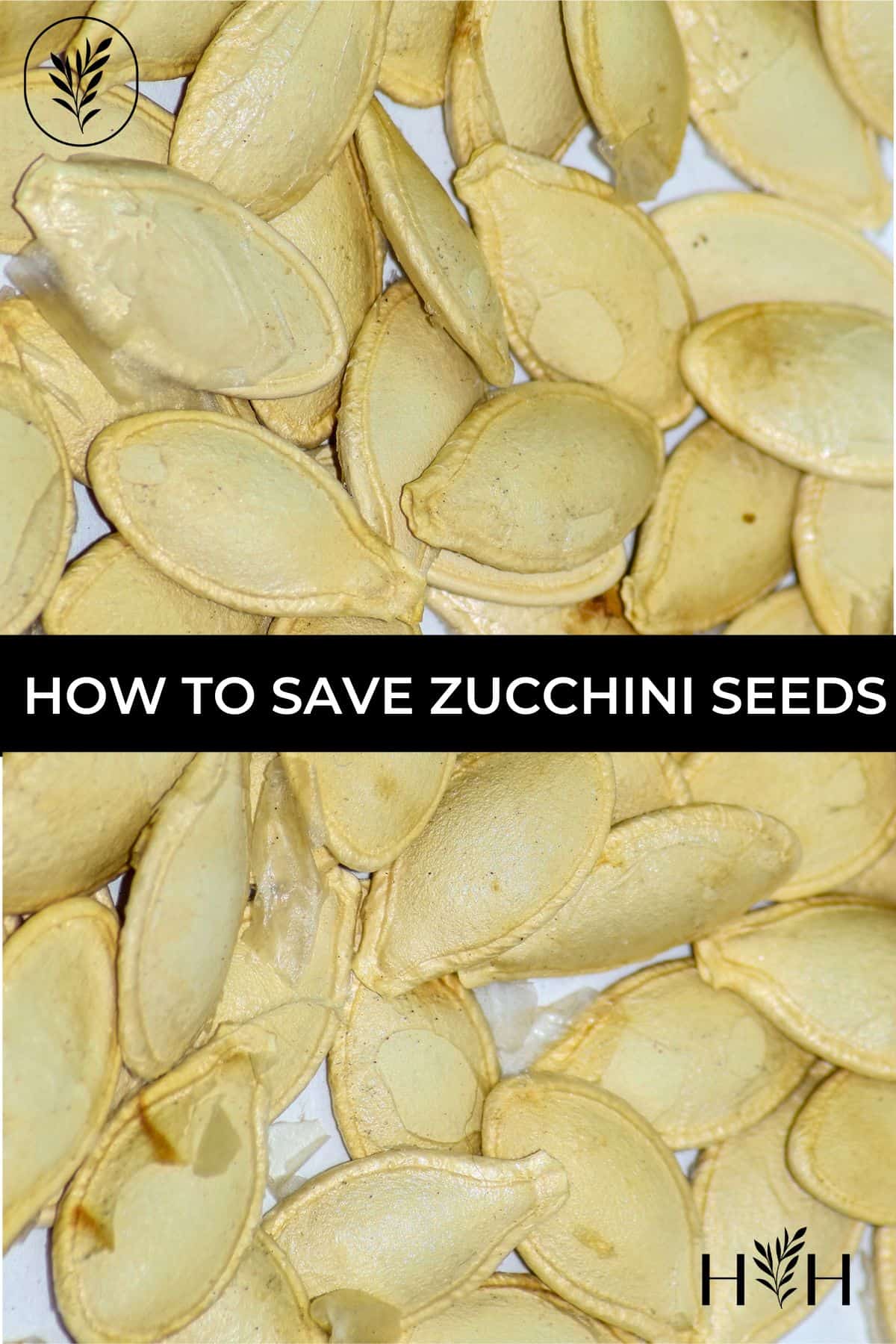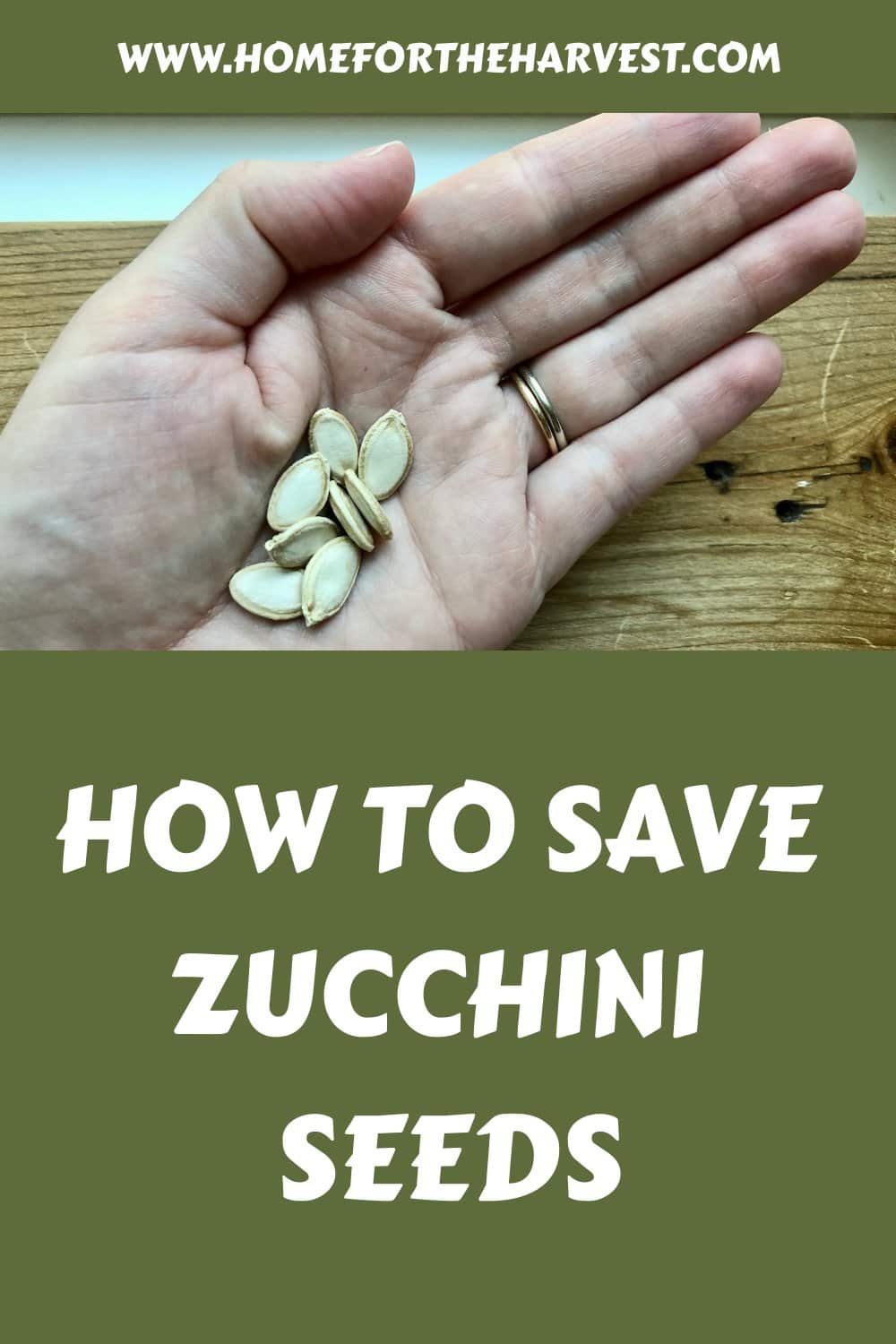Saving zucchini seeds is (almost) as easy as growing zucchinis! There are just a few important things to watch out for.
To save zucchini seeds, pollinate blossoms by hand to avoid cross-pollination. Collect very, very ripe zucchinis from 6-12 (or more) plants of one variety. Slice lengthwise and scoop out the seeds. Clean the seeds with fresh water and remove any floating seeds. Allow them to dry for a day or two until they are crisp before labeling and keeping in an airtight container.
Read on to learn all about how to save zucchini seeds!
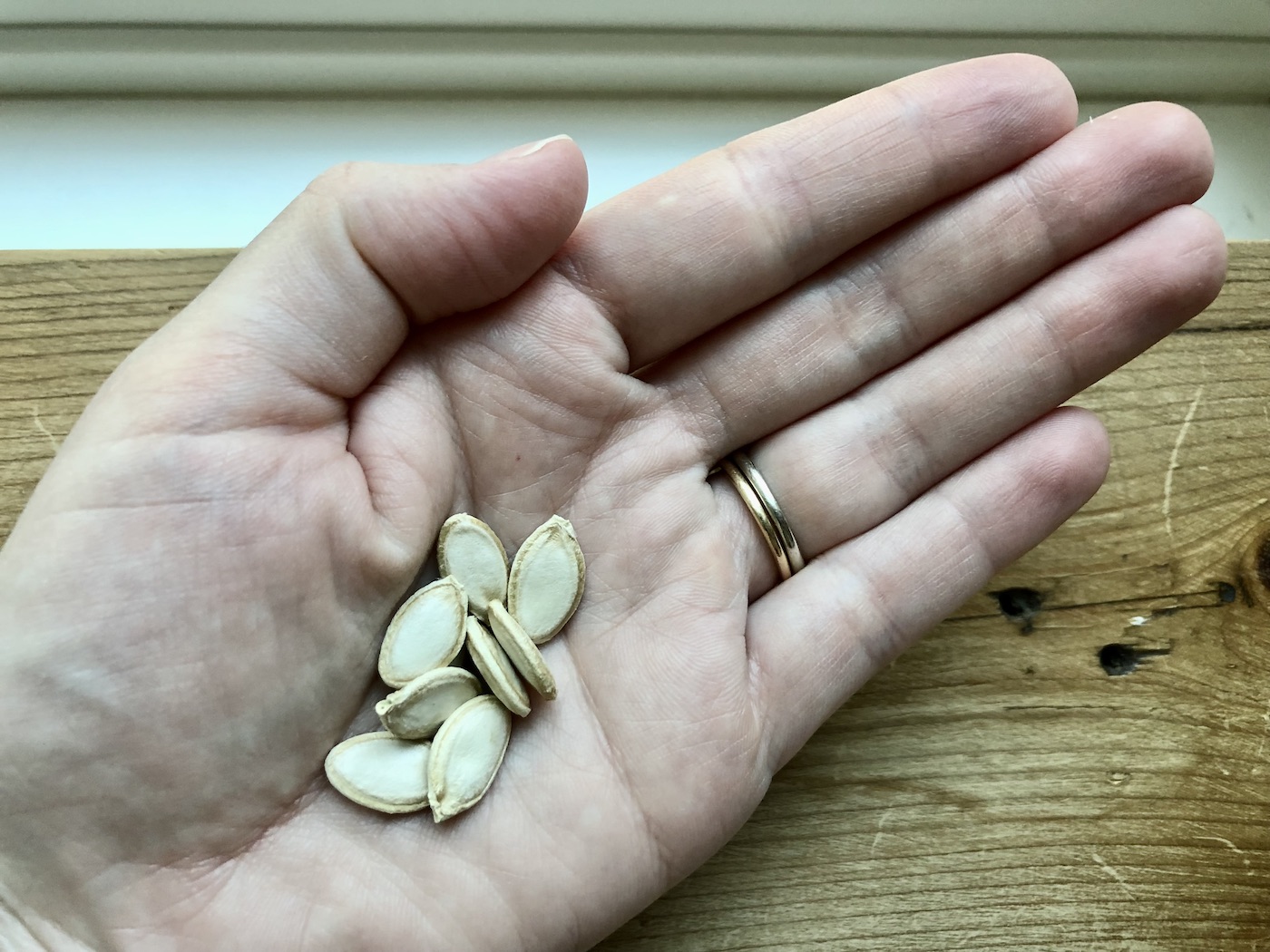
Introduction to saving zucchini seeds
Zucchini seeds are not quite as easy to save as pumpkin seeds, but they are still a great beginner seed-saving project. Zucchinis are not self-pollinating, which means that the flowers require assistance from bees or other insects to spread pollen from the male flowers to the female flowers of other plants. Because each flower opens for only one day, planning is critical.
Most home gardeners grow only one variety of zucchini, so there isn’t much risk of cross-pollination if that’s the only variety. That said, there are actually many types of ornamental pumpkins that are of the same species as the zucchini (Cucurbita pepo), and can cross-pollinate. This includes popular varieties like Sugar Pie pumpkin and Jack be Little mini pumpkins. For this reason, you do need to isolate your zucchini blossoms from other zucchini varieties and from some other pumpkins to collect seeds that will grow true to type.
Planting zucchini for seed saving
Plant a minimum of six to twelve zucchini plants of one variety to ensure you have a large quantity of viable seed that is genetically diverse.
Zucchini plant flowers are not self-fertile. Each plant develops both female and male blooms, but the female flowers must be fertilized with pollen from the male blossom of a different plant to produce good-quality fruit and seeds. To prevent mixing up the squash seeds with their own pollen, space them far enough apart so that it’s clear which vines belong to which plants.
Choose an open-pollinated variety
Make sure the zucchini variety you select is open-pollinated. Seeds saved from hybrids (F1 crosses) will not save true to type.
Here are some great open-pollinated zucchini
- Black beauty zucchini
- Fordhook zucchini
- Golden zucchini
- Grey zucchini
- Ronde de Nice zucchini
Isolation between varieties of zucchini and some other squash plants
For true-to-type seed saving, one zucchini variety must be isolated from all other different varieties of the same species. So, you need to isolate blossoms when growing both Fordhook zucchini and sugar pie pumpkin, for instance.
Zucchini plants have large isolation distances for seed saving. Isolate varieties of the same species by at least 800 feet (250 meters). Gardeners usually isolate and hand-pollinate individual blossoms rather than isolating the entire patch.
Bag individual zucchini flower buds before they open or hold them closed to prevent insects from entering. You may either seal them shut with tape or keep them closed with a clothespin or hair clip. If you have an entire hoop house with insect netting to dedicate to seed saving, it’s even better (as long as you keep it to a single zucchini variety within for true-to-type seeds).
Companion planting for seed saving
In addition to the squash, gardeners may grow a variety of other plants in their yard. These flowers are intended to keep pollinating insects busy and distracted. We want bumblebees to spend their time around these other flowers rather than flying from one squash plant to another. Placing a tall crop like corn between different types will also minimize cross-pollination.
By planting zinnias, nasturtiums, or another flower that attracts pollinators in your garden, you can be sure they will have plenty to drink and eat without having to fly from one squash plant to the next. Here are some more ideas for companion plants for zucchinis.
Growing zucchini for seed saving
To grow healthy zucchini plants, water them often and remove any sick leaves. Make sure there are no pests on your plant before applying a slow-release organic fertilizer around the roots to help keep it cool while also ensuring moisture levels stay high!
Be on the lookout for the first flowers, as these often produce zucchinis with the most viable seeds. To catch the emerging squash blossom buds before they open, look for greenish-yellow tips and straight sides. When you see these signs place a mesh or silk bag over them to protect them from insects.
Early the next morning, pollinate squash blossoms. Blossoms close in the late afternoon, and pollination is less likely to succeed at exceptionally hot temperatures.
Look for a female flower on each plant to be pollinated. It should still be closed, yet it should appear as though it is about to open. Each bloom to be fertilized will need pollen from a male flower from a different plant brought to it (of the same variety if trying to save true-to-type).
Tie a label or a ribbon onto the stem below the blossom before pollinating. Remove the petals from the male flower and open the female flower.
Using a tiny paintbrush, apply the pollen to the stigma of the female flower. If that’s more convenient for you, you can also tap the anthers of the male flower against the female flower. You may wish to do this with 2-3 different male blossoms per female blossom.
Pull closed the petals on the female flower and bag it or clip it shut again. Repeat this process for each taped/clipped blossom on each plant.
After pollination, the flowers will wilt and die back. The fruits will mature and ripen as normal. Allow them to stay on the plant until completely ripe before harvest.
Choosing zucchini to save seeds from
Zucchini should be left on the vine to ripen. Harvest at least six ripe zucchinis from healthy and disease-free plants to allow ample genetic diversity and to ensure high-quality seed production.
Harvest zucchinis that are overripe and have started to yellow or develop brown spots. Once picked, store them in a cool, dry place for 7-10 days to allow the fruit to mature further and the seeds to develop.
Preparing zucchini for seed saving
Cut the zucchinis in half length-wise and scoop out the seeds into a bowl using a spoon. This can be a bit gross with overripe zucchini, so wear rubber gloves if you wish. Wash the seeds thoroughly with water to remove all the pulp.
After washing, drain the seeds in a colander and spread them on a plate or screen to dry. Move them around every few hours to help speed up the drying process. They should take only 1-3 days to dry. Once they’re dry, store the seeds in a cool, dark place in an airtight container.
Seal the dry seeds in a glass jar with a good lid or an airtight plastic container and keep them in the fridge or freezer. Dry zucchini seeds should last for 5 years if stored properly.


